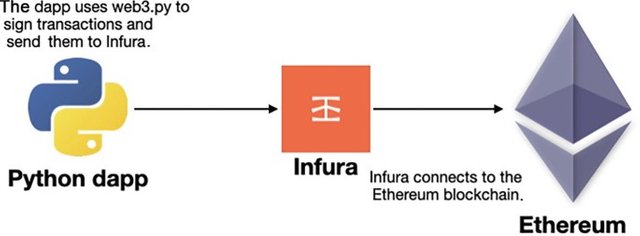Protecting Your Superstar Photo with Blockchain: A Guide to Securing Digital Rights Using Python Programming
As a photographer, capturing a unique moment such as a photo of a superstar is a valuable achievement but In today's Digital world, loosing your digital rights and credits has become an unending occurrence that has grappled most people all over the world. Digital assets are as valuable as physical assets but loosing them to cyber theft, manipulation/unauthorised use and impersonation is never going to end, not in near future. However, using blockchain technology can help you secure your digital right by creating a secure immutable record of your ownership .
In this article, I'm going to highlight some of the importance of blockchain and we will explore how to leverage blockchain to protect your photograph and ensure you always have credit to your work
WHY YOU SHOULD USE BLOCKCHAIN:
Prove Ownership: To create an immutable record showing that you were the original photographer.
Prevent Tampering: Any modification to the image will result in a different digital fingerprint, making tampering or forgery easy to detect.
Establish Copyright: Once your photo is on the blockchain, it serves as a timestamped proof of authorship and copyright, protecting your intellectual property rights.
Track Sales or Licensing: If you decide to sell or license your photo, blockchain allows for transparent tracking of ownership transfers, ensuring you retain credit even after the sale.
Steps to Protect Your Photo Using Blockchain:
Hash the Image: The first step is to convert your image into a unique digital fingerprint called a hash. A hash is generated using a cryptographic algorithm (like SHA-256) that creates a string of characters representing your image. Any changes to the image, even as small as a pixel alteration, will produce a completely different hash.
Registering the Hash on a Blockchain: Once you have the hash of your photo, you can register it on the blockchain. This process involves; Uploading the hash (not the actual image) to a blockchain platform.
Including relevant metadata, such as the photo’s creation date, location, and your ownership details.
This provides a permanent timestamp that proves when the photo was first registered.
This can be done either on Etherium, Bitcoin or FlowCreating a Non-Fungible Token (NFT): By creating an NFT, you can tokenise your photo, making it a digital asset that is traceable and sellable. NFTs ensure that every transaction involving the image, whether it is sold, transferred, or licensed, is recorded transparently on the blockchain, providing a secure history of ownership.
HOW TO IMPLEMENT THIS DIGITAL ASSET SECURITY USING PYTHON
Step 1. You'll need a few Python libraries to work with blockchain:
a. web3.py for interacting with the Ethereum blockchain.
b. hashlib for hashing your image.
c. requests for making API calls to blockchain platforms.
Step 2. Hash Your Image
First, hash your image to create a unique identifier. Here's how you can do this in Python using the hashlib library:
import hashlib.
def hash_image(file_path):
# Open the image file in binary mode.
with open(file_path, 'rb') as my_photo:
img_data = my_photo.read()
# Create a SHA-256 hash of the image
img_hash = hashlib.sha256(img_data).hexdigest()
return img_hash
Example usage:
image_path = 'path_to_your_image.jpg'
image_hash = hash_image(image_path)
print(f'Image hash: {image_hash}')
Step 3: Register the Hash on Ethereum
Using the web3.py library, you can interact with the Ethereum blockchain and store the hash in a smart contract.
from web3 import Web3
Connect to an Ethereum node (you can use Infura or another Ethereum node provider)
infura_url = "https://mainnet.infura.io/v3/YOUR_INFURA_PROJECT_ID"
web3 = Web3(Web3.HTTPProvider(infura_url))
Check if connected
if web3.isConnected():
print("Connected to Ethereum")
Example of interacting with a smart contract to store the hash
You will need to write or use an existing smart contract for this purpose
Example: Store the hash in a blockchain transaction
def store_hash_on_ethereum(hash):
# Example function to interact with a contract
# Replace with actual contract interaction code
pass
Call the function to store your image hash
store_hash_on_ethereum(image_hash)
Step 4: Verify the Hash
Once the hash is stored on the blockchain, anyone can verify the authenticity of your photo by rehashing the image and comparing it to the stored hash.
Always protect your digital assests

Never knew anything like this before but it was very instructive and it is possible to keep everything safe if you try.Thanks so much for sharing a great trick that can be easily used for your own safety and the safety of others.
Thank you. Please follow me. I am new to Steemit